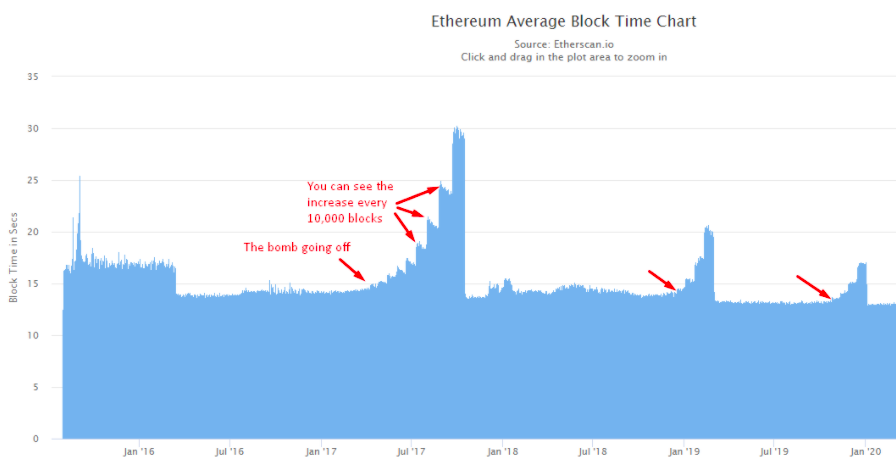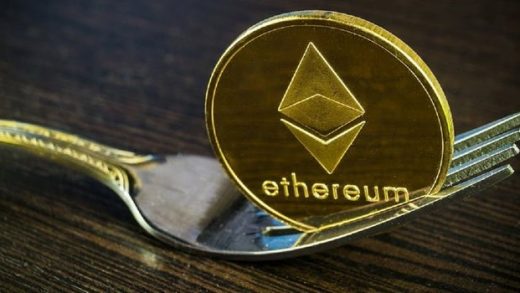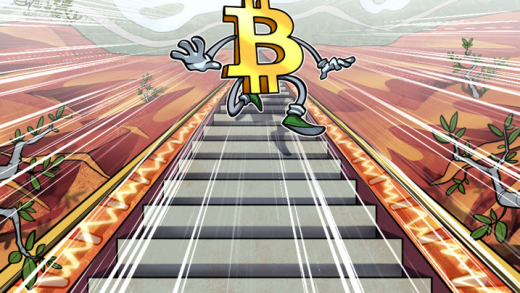
Ethereum core developers have a bomb to tackle this summer. If untreated, that would severely slow down the network.
In brief
- Ethereum’s encoded difficulty bomb is set to explode this summer.
- Tim Beiko and James Hancock, Ethereum core developers, told Decrypt the team will delay the bomb to December.
- That might be the last time the developers ever need to take that action.
Ethereum developers agreed on Friday how to delay a “difficulty bomb” that, if left unattended, would start to slow down the Ethereum network this summer.
The difficulty bomb is an old piece of code that makes mining on Ethereum slower—and less profitable—over time by exponentially increasing the lag between the production of each block.
The bomb was planted in 2015 to incentivise devs to implement Ethereum 2.0.
Ethereum 2.0 switches the network from proof-of-work (PoW), a way of validating transactions with powerful mining computers, to proof-of-stake (PoS), which rewards those who pledge coins to the network.
It takes an average of thirteen seconds to mine a block on Ethereum right now. Without delaying the bomb, it would take more than twenty seconds to validate a block by the end of the year.
On Friday, Ethereum developers agreed on how many blocks were necessary to delay the bomb until December.
Listen to The Decrypt Daily Podcast
Your daily dose of cryptocurrency news, learning, gossip, and discussions. Listen
The calculation for the delay was proposed by Ethereum core developer James Hancock. “The bomb’s always there, and we defuse it by turning the blocktime back just for the bomb,” he told Decrypt. Hancock’s proposal delays the bomb by 9,700,000 blocks.

Tim Beiko, an Ethereum core developer, told Decrypt that developers dismissed a proposal to delay the bomb to next spring. That won’t be necessary, he said.
Ethereum developers expect that by December, the network will update to allow Ethereum 1.0, the network that relies on PoW, to communicate with Ethereum 2.0, the new network that relies on PoS. This is known as the Merge.
“If the Merge is ready by December, we won’t need to do anything about the bomb because we will move away from mining entirely,” Beiko said.
Should plans for the Merge remain unimplemented, Ethereum’s Shanghai fork, expected to go live in October, will delay the difficulty bomb once again. The bomb has been delayed three times so far: first in October 2017, then in February 2019 and finally in January 2020.











